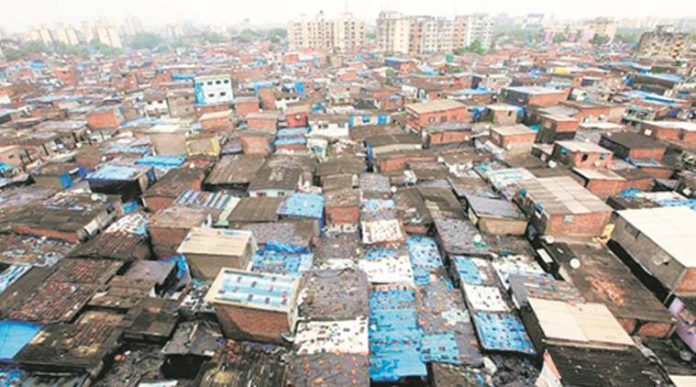Adani Realty will get seven years to see the work through, including rehabilitating more than 56,000 families.
The region plays a vital role in the economy, likely generating an annual turnover of several hundred crores of rupees.
The Dharavi Redevelopment Project (DRP), initially mooted in 2004, has recently made significant strides.
The Maharashtra state government granted approval to the Adani Group’s bid for the redevelopment project that seeks to transform Asia’s second-largest slum cluster.
As per Swarajya’s earlier report, in a government resolution (GR) dated 13 July, the Maharashtra housing department granted final approval for the appointment of Adani Properties for the redevelopment of Dharavi.
In November 2022, the Adani group had emerged as the highest bidder for the redevelopment of Mumbai’s Dharavi — one of the largest slum clusters in the country — with an initial investment commitment of Rs 5,069 crore, against a base price of Rs 1,600 crore.
As per the terms of redevelopment, Adani Realty will get seven years to see the work through, including rehabilitating more than 56,000 families. The project is estimated to cost around Rs 23,000 crore.
Adani’s Ambitions For Dharavi
Following the approval, chairman Gautam Adani, of the Adani Group, expressed an optimistic sentiment, sharing his profound personal connection to one of Asia’s largest slums.
He revealed that this strong bond prompted him to place a bid 2.5 times higher than that of the next bidder for the project, as per a NDTV report.
Gautam Adani sees this as a new chapter of pride and purpose which is beginning. He added, “It is a historic opportunity for us to create a new Dharavi of dignity, safety and inclusiveness.”
Fully cognisant of the forthcoming challenges, given the vast scale and complexities involved, with one of the primary hurdles being the rehousing of approximately 1 million residents in the area, Adani acknowledges, “While I have neither fixed ideas nor notions about redeveloping Dharavi, what I do have are good intent and an iron will for a human-centric transformation with the people of Dharavi at its centre.”
The project will adopt a bottom-up approach, giving utmost importance to the perspectives and feelings of the residents.
“We will create an institutionalised mechanism to capture the sentiments of not only the people of Dharavi but also of the finest brains and each and every caring Mumbaikar, who are equal stakeholders in this journey of transforming Dharavi,” Adani maintains.
The new Dharavi will reflect the quintessential character of Mumbai — the spirit, grit, unity in diversity, colour and determination — without losing the timeless essence of the old Dharavi.
Navigating Complexities For This Large-Scale Revamp
Covering an area of 259 hectare, Dharavi is home to approximately 600,000 residents and boasts of around 12,000 commercial establishments.
The region plays a vital role in the economy, likely generating an annual turnover of several hundred crores of rupees.
Given the unique characteristics of Dharavi, this redevelopment project cannot follow a conventional slum rehabilitation approach. Many residents and businesses have deep-rooted connections to the existing settlement, spanning over several years.
Rather, it would require an off-the-wall approach and ideas to create new ways of execution to reckon with the numerous social, infrastructural, environmental and economic aspects that appear with its projects.
The primary concern remains the rehabilitation of the dense slum population and businesses of the settlement. Around 59,165 families will be part of this rehabilitation — of which 46,191 are residential and 12,974 non-residential.
The families ineligible for rehabilitation will not be displaced. These families will be provided shelter under a rental housing scheme.
In addition to shelter rehabilitation, a crucial aspect is sustaining the diverse economic activities thriving in Dharavi. The region houses a dynamic concentration of industries and enterprises within its 223 hectares of land area.
Identifying the diverse nature and types of these activities, along with their supporting networks, becomes imperative as they play a vital role in sustaining numerous livelihoods and providing income to thousands of Mumbai citizens.
These include non-polluting industries, small-scale businesses, and recycling enterprises, among others.
Additionally, these changes are likely to give rise to conflicts concerning land, housing allotment, livelihoods, and varying population requirements. The challenge lies in creating a resettlement framework that strives to meet the maximum needs of the inhabitants.
Furthermore, a project of this magnitude may encounter concerns regarding the existing land conditions and the need to develop suitable infrastructure for the area and proposed activities.
Given the large population, ensuring adequate interactions and awareness of policies for upgradation, financing, and allotment will be crucial throughout the rehabilitation process.
During the planning phase, challenges may arise regarding the allocation of land and zoning for rehabilitation and new developments, driven by social, economic, and political factors.
The key approach is to adopt a highly coordinated and participatory process, recognising and involving the existing social and economic cultures and the active engagement of present inhabitants.
Reshaping Maximum Potential Through Redevelopment
The redevelopment project will be a major economic contributor to Mumbai and Maharashtra.
The plan incorporates industrial and business zones for the existing and new businesses and commercial activities with better facilities, infrastructure and platforms for improved conditions and growth.
The increased floor space index (FSI), will allow the structures to grow vertically, freeing up more land area for multiple activities. Dharavi currently has a low FSI and is sprawled horizontally, accommodating the high density.
Dharavi retains a prime location in Mumbai with proximity to existing business districts and financial centres of the city, including the Bandra Kurla Complex and Nariman Point.
Through the re-design, the vast expanse of Dharavi slums will be connected to the progressive landscape of Mumbai.
This revamped identity of Dharavi will reduce residential differentiation within the city and enable the seamless integration of its residents with the overall city population.


